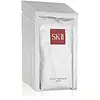What's inside
What's inside
 Key Ingredients
Key Ingredients

No key ingredients
 Benefits
Benefits

 Concerns
Concerns

 Ingredients Side-by-side
Ingredients Side-by-side

Water
Skin ConditioningBifida Ferment Lysate 20%
Skin ConditioningGalactomyces Ferment Filtrate 9%
HumectantMethyl Gluceth-20
HumectantGlycereth-26
HumectantGlycerin
HumectantNiacinamide
SmoothingPEG-90
Humectant1,2-Hexanediol
Skin ConditioningMentha Piperita Leaf Extract
Skin ConditioningSolanum Virginianum Extract
Skin ConditioningCamellia Sinensis Leaf Extract
AntimicrobialAnthemis Nobilis Flower Extract
MaskingLemongrass Oil
Pinus Pumilio Branch/Leaf Oil
MaskingBetula Lenta Bark Oil
MaskingLavandula Angustifolia Oil
MaskingRosmarinus Officinalis Leaf Oil
MaskingCedrus Atlantica Bark Oil
MaskingAlteromonas Ferment Extract
Skin ConditioningJasmine Oil/Extract
Silk Extract
Skin ConditioningSqualane
EmollientSodium Hyaluronate
HumectantPanthenol
Skin ConditioningButylene Glycol
HumectantPolyglyceryl-3 Methylglucose Distearate
EmulsifyingPolyglyceryl-3 Distearate
EmulsifyingGlyceryl Stearate Citrate
EmollientGlyceryl Stearate Se
EmulsifyingCaprylyl Glycol
EmollientOctyldodeceth-16
EmulsifyingXanthan Gum
EmulsifyingCarbomer
Emulsion StabilisingTromethamine
BufferingAlcohol Denat.
AntimicrobialEthylhexylglycerin
Skin ConditioningAdenosine
Skin ConditioningDisodium EDTA
Limonene
PerfumingLinalool
PerfumingCitral
PerfumingWater, Bifida Ferment Lysate 20%, Galactomyces Ferment Filtrate 9%, Methyl Gluceth-20, Glycereth-26, Glycerin, Niacinamide, PEG-90, 1,2-Hexanediol, Mentha Piperita Leaf Extract, Solanum Virginianum Extract, Camellia Sinensis Leaf Extract, Anthemis Nobilis Flower Extract, Lemongrass Oil, Pinus Pumilio Branch/Leaf Oil, Betula Lenta Bark Oil, Lavandula Angustifolia Oil, Rosmarinus Officinalis Leaf Oil, Cedrus Atlantica Bark Oil, Alteromonas Ferment Extract, Jasmine Oil/Extract, Silk Extract, Squalane, Sodium Hyaluronate, Panthenol, Butylene Glycol, Polyglyceryl-3 Methylglucose Distearate, Polyglyceryl-3 Distearate, Glyceryl Stearate Citrate, Glyceryl Stearate Se, Caprylyl Glycol, Octyldodeceth-16, Xanthan Gum, Carbomer, Tromethamine, Alcohol Denat., Ethylhexylglycerin, Adenosine, Disodium EDTA, Limonene, Linalool, Citral
 Reviews
Reviews

Ingredients Explained
These ingredients are found in both products.
Ingredients higher up in an ingredient list are typically present in a larger amount.
Butylene Glycol (or BG) is used within cosmetic products for a few different reasons:
Overall, Butylene Glycol is a safe and well-rounded ingredient that works well with other ingredients.
Though this ingredient works well with most skin types, some people with sensitive skin may experience a reaction such as allergic rashes, closed comedones, or itchiness.
Learn more about Butylene GlycolDisodium EDTA plays a role in making products more stable by aiding other preservatives.
It is a chelating agent, meaning it neutralizes metal ions that may be found in a product.
Disodium EDTA is a salt of edetic acid and is found to be safe in cosmetic ingredients.
Learn more about Disodium EDTAGalactomyces Ferment Filtrate (GFF) is a yeast traditionally used to make the Japanese alcoholic beverage, sake.
GFF has moisturizing and antioxidant properties.
Studies show GFF improves our skin's natural moisturizing factors (NMF). Our NMF consists of many components that naturally moisturize our skin. Having healthy NMF keeps our skin plump, protected, and hydrated.
This ingredient tells our skin to create more filaggrin, an important component for NMF.
Filaggrin gathers all the structural proteins in our outer layer of skin and creates a tight barrier, helping to protect our skin against allergens and bacteria. This also helps prevent moisture loss.
Thanks to its antioxidant properties, GFF also protects our skin against oxidative stress and UV induced inflammation.
One study found GFF helped regulate sebum (oil) production and keratin in participants.
GFF may not be fungal-acne safe. We recommend speaking with a professional if you have concerns.
Many components of sake, such as GFF, are studied for their anti-aging benefits today. This is because sake brewers are known to have youthful hands.
Learn more about Galactomyces Ferment FiltrateWater. It's the most common cosmetic ingredient of all. You'll usually see it at the top of ingredient lists, meaning that it makes up the largest part of the product.
So why is it so popular? Water most often acts as a solvent - this means that it helps dissolve other ingredients into the formulation.
You'll also recognize water as that liquid we all need to stay alive. If you see this, drink a glass of water. Stay hydrated!
Learn more about WaterXanthan gum is used as a stabilizer and thickener within cosmetic products. It helps give products a sticky, thick feeling - preventing them from being too runny.
On the technical side of things, xanthan gum is a polysaccharide - a combination consisting of multiple sugar molecules bonded together.
Xanthan gum is a pretty common and great ingredient. It is a natural, non-toxic, non-irritating ingredient that is also commonly used in food products.
Learn more about Xanthan Gum